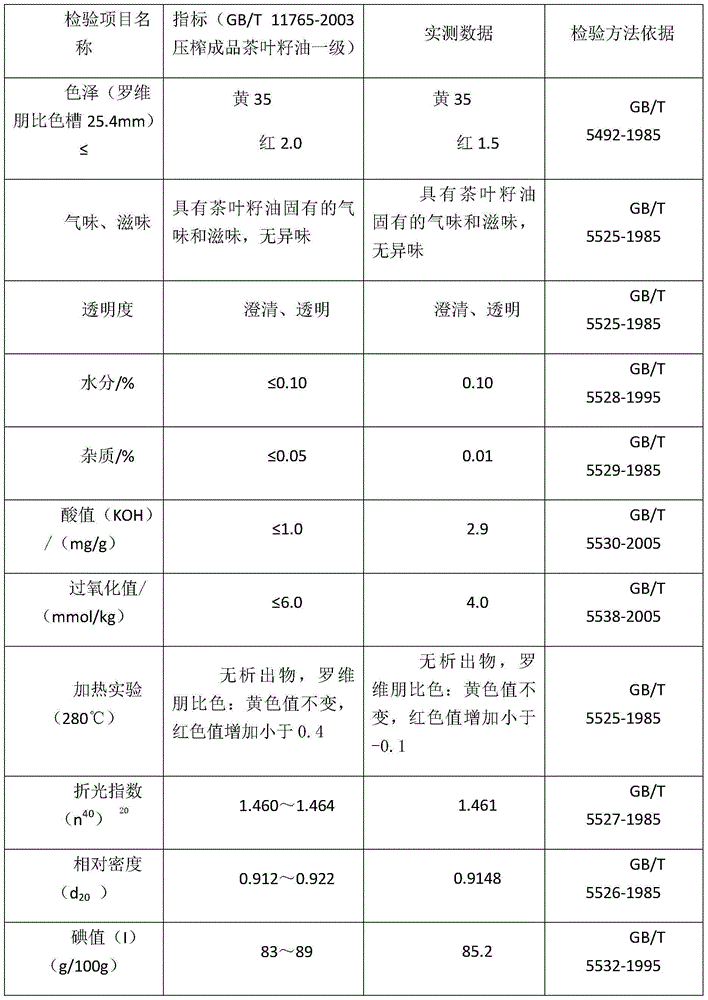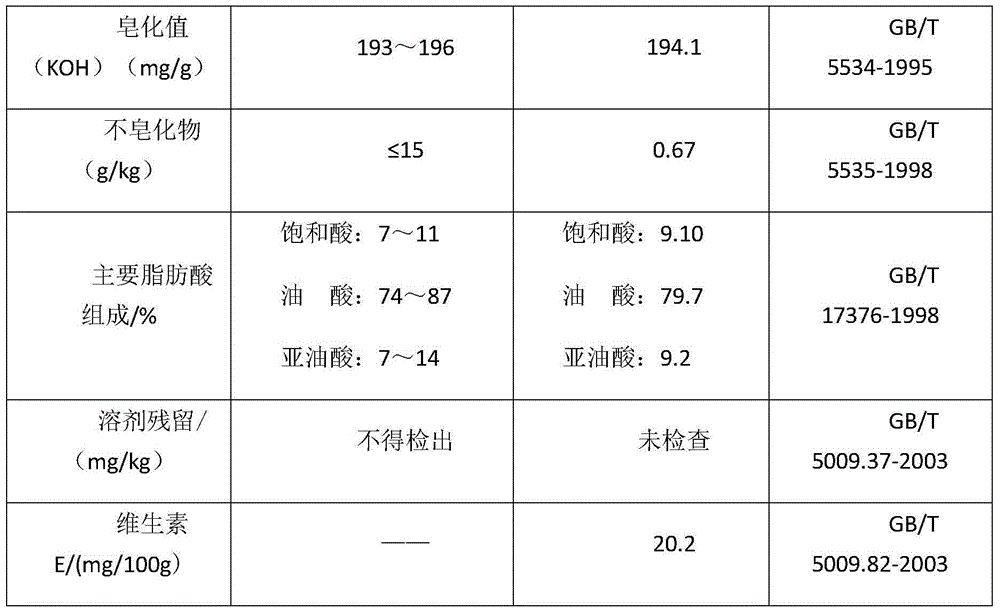Method for producing tea seed oil by tea seed shelling and cold-pressing
A technology of tea seed oil and tea seed, which is applied in the direction of fat oil/fat production, fat production, fat oil/fat refining, etc., to achieve the effect of strong water solubility, high melting point, and increased nutritional content
- Summary
- Abstract
- Description
- Claims
- Application Information
AI Technical Summary
Problems solved by technology
Method used
Image
Examples
Embodiment 1
[0019] A method for producing tea seed oil by dehulling and cold pressing of tea seeds is characterized in that it comprises the following steps:
[0020] (1) Cleaning: Two layers of vibrating sieves are used to remove the large and small impurities in the tea seeds;
[0021] (2) Low-temperature drying: using a flat-panel dryer, controlling the interlayer heating steam pressure at 0.3MPa, drying the tea seeds until the moisture content is 15%;
[0022] (3) Classification: Use a vibrating sieve to gather tea seeds of similar size;
[0023] (4) pulverization: the tea seed is broken into pieces by an impact pulverizer;
[0024] (5) Separation of kernel and shell: obtain kernels containing certain shells;
[0025] (6) Secondary crushing: Use toothed counter-rollers to crush the kernels with a certain shell, and the distance between the two teeth is preferably 0.3-0.5mm;
[0026] (7) Drying with iron: Add 0.2% hemin by weight to the pulverized tea seed kernels, stir and mix even...
PUM
 Login to View More
Login to View More Abstract
Description
Claims
Application Information
 Login to View More
Login to View More - R&D
- Intellectual Property
- Life Sciences
- Materials
- Tech Scout
- Unparalleled Data Quality
- Higher Quality Content
- 60% Fewer Hallucinations
Browse by: Latest US Patents, China's latest patents, Technical Efficacy Thesaurus, Application Domain, Technology Topic, Popular Technical Reports.
© 2025 PatSnap. All rights reserved.Legal|Privacy policy|Modern Slavery Act Transparency Statement|Sitemap|About US| Contact US: help@patsnap.com


